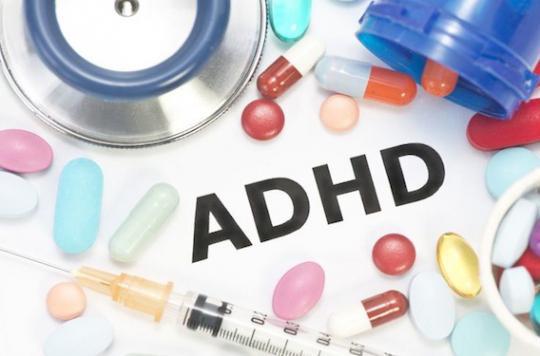According to a study, Ritalin, used in the treatment of attention deficit hyperactivity disorder (ADHD), decreases bone density in children.

Methylphenidate (MPH) again singled out! This amphetamine-like molecule which is prescribed to treat attention deficit disorder with or without hyperactivity in children and adolescents is marketed under several brand names, the best known being Ritalin.
Classified among narcotics, this “chemical straitjacket”, as its detractors call it, is however widely prescribed. But it also causes undesirable effects recalls a study this Friday.
1 in 4 children have osteopenia
Ppresented at the 2016 annual meeting from the Annual Meeting of the American Academy of Orthopedic Surgeons (AAOS), this work shows that children and adolescents who take these drugs to relieve their ADHD have a decrease in bone density.
The work was carried out on 5,315 young patients participating in the cohort Health and Nutrition Examination Survey (NHANES). More specifically, the results collected show that the treated children have a lower bone mineral density in the femur, the neck of the femur, and the lumbar spine.
In addition, 25% of them met the criteria for osteopenia, a physiological condition characterized by lower than normal bone density. A condition that, according to some studies, could have long-term implications and lead to poor bone health in adulthood and old age.
Side explanations, the US Army Institute of Surgical Research, which conducted the study, questions the direct effects of these drugs on the sympathetic nervous system, which also plays an important role in bone remodeling.
These experts therefore call on pediatricians to take into account the monitoring of bone health in children who receive methylphenidate.
The United States, first consumers
Findings that could well worry parents across the Atlantic, where this class of drugs is used more and more widely. the health log site recalls that in the United States, 3.5 million children and adolescents are treated with these drugs, with an increase in prescriptions of 28% over the period 2007-2011.
In France, we are also witnessing a boom in sales of Ritalin. According to a 2013 report from the National Medicines Safety Agency (ANSM), the number of boxes sold increased 19-fold between 1996 and 2012, from 26,000 to 494,000.
Another figure, the one revealed by The Parisian which revealed in 2013 that sales of this drug had increased by 70% between March 2008 and March 2013. However, if we compare to the United States, it would seem that in France, Ritalin is little prescribed. In December 2012, the HAS (1) estimated that the prescription rate was 0.15% in the school-age population. This was the lowest rate in Europe.
ANSM recalls the risks
Faced with these figures, the ANSM has all the same recalled in the past the many undesirable effects of the product. For example, it did not rule out cardiovascular risk. In its brochure, it also mentioned “the risk of neuropsychiatric and cerebrovascular adverse effects”. In addition, the ANSM indicated that “the risks of misuse and dependence also require special monitoring”.
So in an attempt to protect patients as well as possible, the Agency recommends, “regular monitoring, in particular of blood pressure, heart rate, height and weight in children, mood and behavior. , a regular reassessment of the need to continue treatment, as well as compliance with the conditions of use make it possible to limit the occurrence of serious adverse effects ”.
(1) In France, the Haute Autorité de Santé issues recommendations for medical practice
.











-1568625605.jpg)



